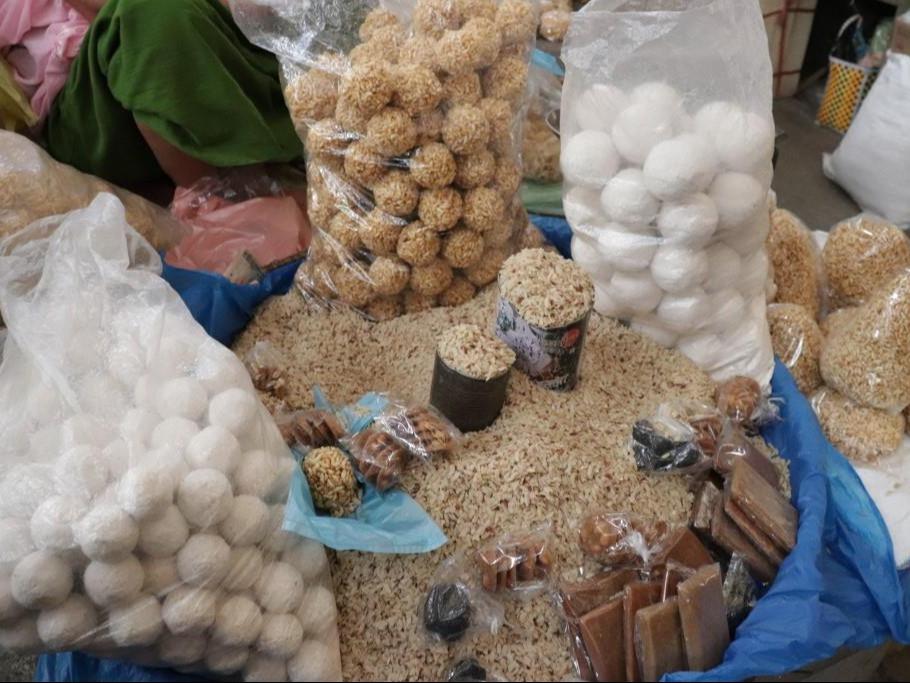When it comes to traditional snacks, few can match the charm and cultural richness of Manipuri Kabok. Originating from the northeastern state of Manipur, this delightful puffed rice treat is not just a snack but a celebration of the region’s heritage and culinary artistry.
The Art of Making Kabok
The process of crafting Kabok is both simple and intricate. It begins with selecting high-quality glutinous rice, which is soaked, drained, and then meticulously roasted in a heavy-bottomed pan until each grain puffs up to perfection. The roasted rice is then mixed with a blend of jaggery, salt, and sometimes spices like ginger, creating a harmonious balance of sweet and savory flavors. Shaped into small balls or festive forms, Kabok is then left to cool, ready to be enjoyed at any time.
Varieties of Product
There are various types of indigenous Kabok products of varied taste. Some of them are Thoiding Khoibak, Thoiding Kangshubi, Kabok Aphaba, Akhingba, Kabok Muri, Kabok Afaba, Kabok Khoidum,Chujak kabok, Kabok Khoibak, Hamei, Thoidingkabok, Sana Kabok, Kabok boon, Phou khoibum, Kabok Akhingba, Lalu (small, medium and Big size) etc.
Varieties to Savor
Kabok comes in a variety of delightful forms, each with its unique twist:
Sweet Kabok: Infused with jaggery, this variant offers a sweet, sticky treat often enhanced with coconut shavings and nuts.
Spiced Kabok: For those who prefer a savory kick, spiced Kabok incorporates ginger, black pepper, or chili powder.
Coconut Kabok: Grated coconut adds a creamy texture and subtle sweetness to the mix.
Nutty Kabok: A crunchy delight, featuring roasted nuts like peanuts and cashews.
Fruity Kabok: A chewy, naturally sweet option with dried fruits like raisins and dates.
A Cultural Treasure
Kabok is more than a tasty snack; it’s a part of Manipur’s cultural fabric. Often prepared during festivals like Lai Haraoba and Ningol Chakouba, Kabok also serves as a religious offering and a symbol of unity during community gatherings. Its preparation is a family affair, bringing loved ones together in the kitchen.
Before, mothers used to buy kabok as sweetmeats for children. Nowadays packet snacks and sweetmeats, prepared by food industries in Manipur, or imported from outside the state, or from neighboring countries, have substituted the indigenous snacks for children.
Conclusion
Whether you’re a food enthusiast eager to explore new flavors or someone with a penchant for traditional treats, Manipuri Kabok offers a delightful experience. Its rich history, diverse varieties, and delectable taste make it a snack worth savoring and celebrating. Indulge in the crunchy, sweet, and sometimes spicy world of Kabok and discover a piece of Manipur’s culinary legacy.









0 Comment